CNC machining is a broad category for a range of processes. Computer Numerical Control (CNC) is the automated control of machining tools by means of a computer. A CNC machine transforms a piece of material according to instructions from a computer programmed to precise specifications. Although there are manual operated devices for machining, CNC machining provides accuracy and repeatability for the desired result, at a desired price.
- Aerospace
- Agriculture
- Automation
- Automotive
- Consumer Goods
- Food & Beverage
- Injection Molding
- Oil & Gas
- Manufacturing
- Material Handling
- Medical Devices
- Military
- Rail & Weigh
- & more
CNC machining can be broken down into several common types: 3-Axis, 4-Axis, 5-Axis, Turning, and Electrical Discharge Machining (EDM). Although other CNC machining processes exist, such as screw machining, the focus of this CNC machining guide is on the former list.
Types of CNC Machining
3-Axis Machining
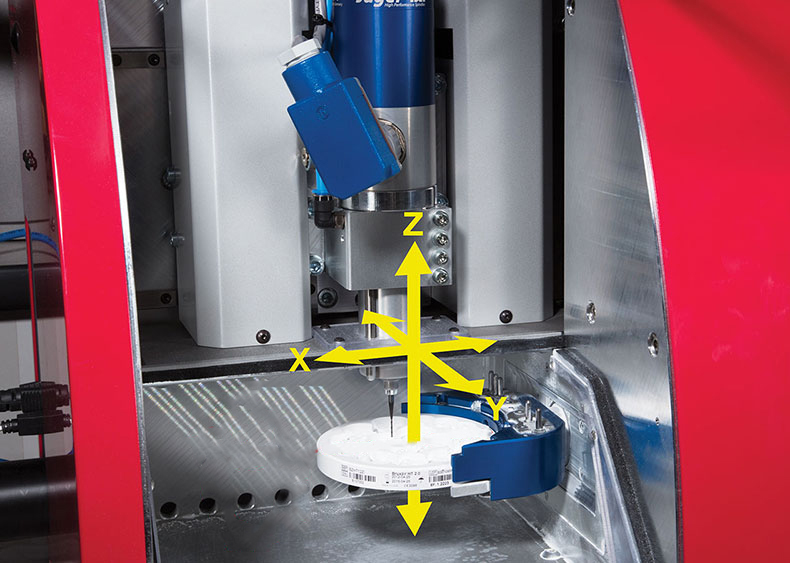
3-axis machining (or milling) is one of the most widely used techniques to make mechanical parts. It is a relatively simple process, using conventional machining tools like the milling machine, which allows material to be worked on 3-axes (X,Y and Z). The machining tool remove shavings in the three basic directions corresponding to the axis of a flat surface. While many standard 3-axis machines have a moving bed, the 3-axis milling center has a stationary bed while the cutter itself operates. 3-axis machines are designed for:
- Automatic/Interactive Operation
- Milling Slots
- Drilling Holes
- Cutting Sharp Edges
In special cases you could force a 3-axis machine to produce the same products as 4-axis and 5-axis, but you will lose the level of detail and cause your operations to increase drastically (and in conjunction decreasing efficiency). While it is a more basic machining process, 3-axis machining may be ideal for your machining project depending on the complexity, the work-piece requirements, accuracy and finish constraints, materials used and your holding capabilities.
4-Axis Machining
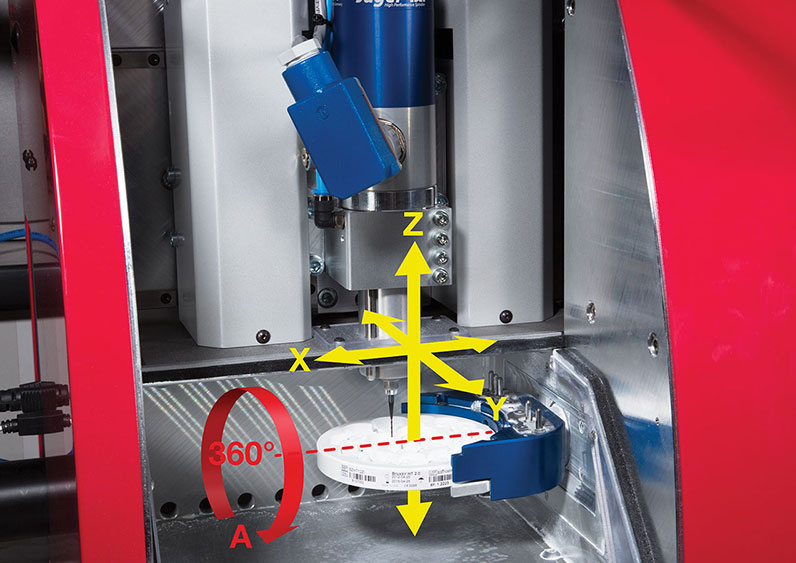
4-axis milling is similar to 3-axis machining, where a cutting tool is used to remove material from a piece to create the desired shape and profile. However, in 4-axis machining, milling is performed on an additional axis. A 4-axis CNC machine operates on the X,Y and Z axis like a 3-axis machine, but it also includes rotation around an additional axis. Depending on which axis the rotation is about, the 4th axis is called the A-axis if about the X-axis, the B-axis if about the Y-axis, or the C-axis if about the Z-axis. To be considered 4-axis, the machine must be capable of simultaneous motion in each 4 different axes. The 4th axis may be used while cutting or to rotate the part to machine a different surface.
A 4th axis is typically either used in an “indexing” mode or a “continuous” mode. When indexing, no cutting happens until the 4th axis is stopped (and often locked with a brake of some kind). In fact, there are some types which are called “indexers” that can only be used to index in fixed degree increments rather than continuously rotating to any desired position. By contrast, “continuous” means that machining happens as the part is being rotated. For example, to produce a cam lobe.
4-axis milling is useful when holes and cut-outs need to be made in the side of a piece or around a cylinder. They can provide quick and efficient work based off the computer numerical inputs for precise results.
5-Axis Machining

5-Axis machining involves using a CNC to move a part or cutting tool along five different axes simultaneously. This allows for the machining of very complex parts. The process of machining involves continuous adjustments of the cutting tool along all five axes to keep the tip optimally perpendicular to the part. 5-axis machining is especially popular for aerospace applications.
Benefits of 5-Axis Machining:
- Single Setup Machining
- Reduced Lead Time
- Increased Efficiency
- Increased Part Geometry
- Improved Precision
- Improved Tool Life
- Decrease Cycle Time
Turning
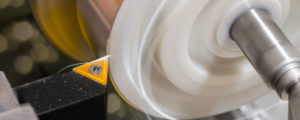
Turning is a process that is designated to the external surface of a material, whereas boring is applied to the internal surface. Turning and boring are part of the larger term known as lathing. Here we will focus on the Turning operation.
Turning on a lathe allows for machining of cylindrical parts. X, Y, and A movement lathes are used for nearly all cylindrical machining projects. Turning on a lathe has limitations with respect to the overall diameter of the stock being machined as well as the overall length. The machinability can also depend on overall chuck and bed size with respect to the tooling needed to manufacture a part. The different types of turning processes; straight, taper, profiling, or external grooving, produce the various types of desired finishes and shapes.
Turning Operations Include:
- Turning
- Facing
- Grooving
- Boring
- Drilling
- Knurling
- Reaming
- Threading
- Polygonal Turning
Electrical Discharge Machining (EDM)
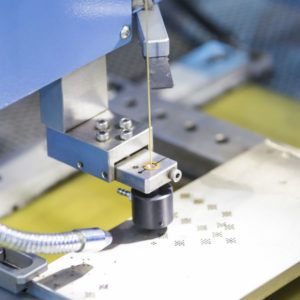
Electrical discharge machining uses electrical discharge as the primary tool with which to shape or otherwise alter a work-piece. There are two general types of EDM: sinker and wire.
Sinker EDM takes place when both the work-piece and the primary electrical discharge source (an electrode) are submerged in insulating fluid, and connected to a power source. As the two components are moved closer together, the power source causes the electrode to generate sparks, which cut away at the work-piece. Sinker EDM is typically used for complex 3-D shaped parts, often with small or odd shaped angles. The process provides a finished part without stresses on the material. Sinker EDM has a wider variety of applications, such as blind cavities/key-ways, thin walls, or cross sections.
Wire EDM involves feeding a brass wire through the work-piece. The work-piece is then submerged in dielectric fluid and connected to a power source, which induces electrical discharge. Wire EDM allows for high precision and near 90 degree corners
EDM Applications and Benefits:
- Mold-Making
- Prototypes
- Small Hole Drilling
- 3D Geometries
- Intricate and Precise Parts
- Low Residual Stress
Material Considerations

Equally important as determining the kind of production run, a product’s material can greatly influence the kind of machining used to generate a given process. Some machining processes are better suited to metal work, whereas others favor plastic. Knowing how a material responds to machining can also aid in proper material selection, resulting in an end-product that has the potential to meet tighter tolerances. Some material categories include:
- Aluminum
- Copper Alloys
- Steel
- Steel Alloys
- Stainless Steel
- Plastics
- Composites
- High Performance Alloys
- Exotic Materials
For an extensive list of over 150 materials readily available at PartsBadger, check out our materials page.
Which Machine Do You Need For Your Parts?
The type of machine that is ideal for your machined part(s) is dependent on:
- Material
- Geometry
- Complexity
- Tolerance
- Lead Time
- Operations
Ideally, the machine shop estimator will estimate your project based on the best possible outcome to deliver your parts on-time and on-spec. The machine(s) used becomes irrelevant, so long as, the price, quality, and delivery standards meet our expectations.
For more on our CNC machining guide or estimating your next machined part(s), start with our rapid quote tool, or email us at [email protected], or call us at (331) 223-4378.

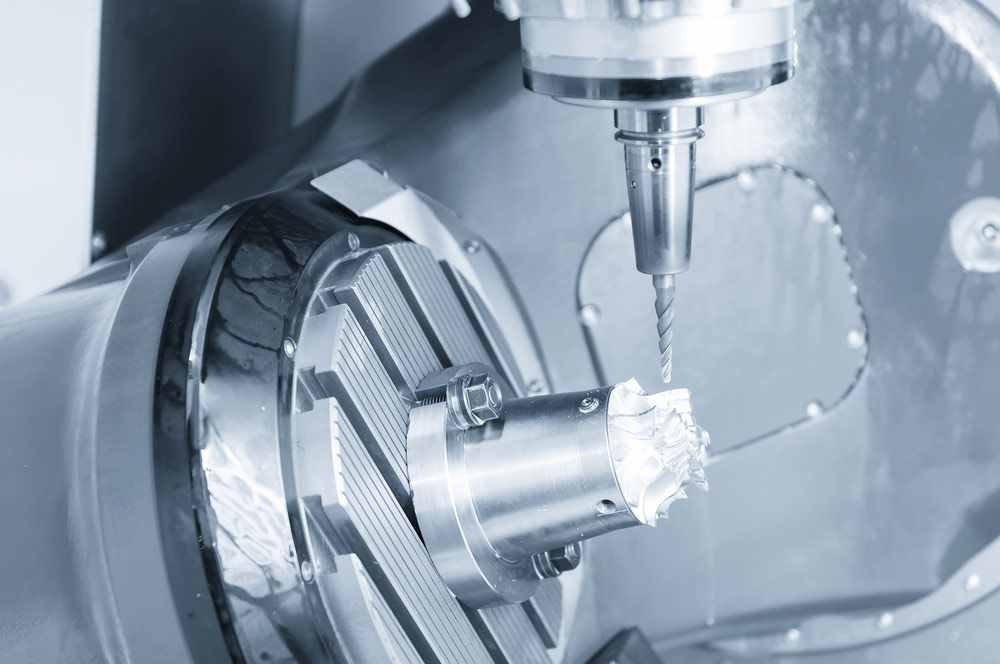
Recent Comments